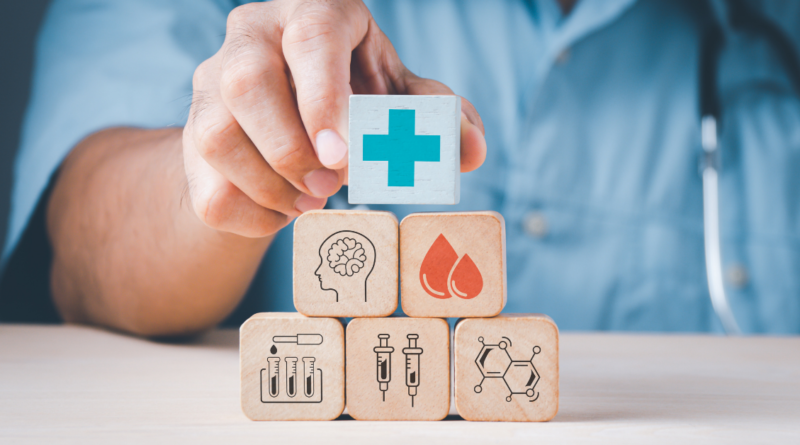Nutrition and Fitness: Unlocking the Secrets to a Healthier Life
In the pursuit of a healthier life, two foundational pillars stand out—nutrition and fitness. These two elements work in tandem to not only improve physical health but also enhance mental well-being, boost energy levels, and support longevity. However, understanding the intricate relationship between what we eat and how we move is key to unlocking the secrets of a healthier life.
This article explores how nutrition and fitness complement each other, their individual importance, and how they can be effectively combined to maximize health benefits. By breaking down the science behind these factors, you can better appreciate their impact on your overall well-being and gain the knowledge necessary to implement healthier lifestyle choices.
1. The Role of Nutrition in Health
What is Nutrition?
Nutrition is the process by which our bodies take in and utilize food to fuel vital processes, maintain growth, and support overall health. Proper nutrition provides the body with essential nutrients—carbohydrates, proteins, fats, vitamins, minerals, and water—that are required to perform basic functions, such as digestion, immune function, and cellular repair.
The key to good nutrition lies not only in consuming enough calories to fuel our body but in choosing the right types of food. A balanced diet ensures that the body gets the necessary nutrients in the proper proportions. Poor nutrition, on the other hand, can lead to a variety of health issues, including obesity, diabetes, heart disease, and mental health conditions.
The Building Blocks of Nutrition
- Carbohydrates: Carbs are the body’s primary source of energy. They are broken down into glucose (sugar), which is used by cells for fuel. Healthy sources of carbohydrates include fruits, vegetables, whole grains, and legumes. It’s important to focus on complex carbohydrates (like whole grains) over simple sugars (like processed snacks) for sustained energy.
- Proteins: Proteins are essential for building and repairing tissues, including muscles, skin, and organs. The body uses amino acids from protein to support cellular growth and function. Sources of high-quality protein include lean meats, fish, dairy, eggs, legumes, and plant-based alternatives like tofu and quinoa.
- Fats: Fats are vital for brain function, hormone production, and absorbing fat-soluble vitamins (A, D, E, and K). Healthy fats, such as those found in avocados, nuts, seeds, olive oil, and fatty fish like salmon, support heart health and inflammation reduction. It’s essential to limit trans fats and saturated fats, which can contribute to heart disease.
- Vitamins and Minerals: These micronutrients are crucial for various physiological functions, including metabolism, immune defense, and bone health. For example, vitamin C supports the immune system, while calcium is necessary for strong bones. Consuming a variety of fruits, vegetables, nuts, and seeds ensures you receive the vitamins and minerals necessary for optimal health.
- Water: Staying hydrated is often overlooked but is one of the most vital components of nutrition. Water supports digestion, regulates body temperature, and aids in nutrient transport. Aim for about 8 glasses of water a day, more if you are physically active or in a hot climate.
The Importance of a Balanced Diet
A well-balanced diet is one that incorporates all these nutrients in appropriate proportions to promote health. The Dietary Guidelines for Americans recommend that:
- 45-65% of your daily calories come from carbohydrates.
- 10-35% from protein.
- 20-35% from healthy fats.
By consuming a balanced variety of foods, your body can efficiently process and utilize nutrients to maintain energy levels, improve immune function, and reduce the risk of chronic diseases.
2. The Power of Fitness in Health
What is Fitness?
Fitness refers to the ability to perform physical activity and exercise regularly to improve cardiovascular health, strength, flexibility, and endurance. It is not just about achieving a specific body image, but rather about optimizing bodily function for a long and healthy life. Fitness plays an essential role in supporting overall health by reducing the risk of chronic diseases such as heart disease, diabetes, and certain cancers.
Types of Fitness Activities
- Cardiovascular Exercise: Cardiovascular or aerobic exercise, such as walking, running, swimming, cycling, or dancing, helps improve the efficiency of the heart and lungs. It increases heart rate and improves blood circulation, which can help reduce the risk of cardiovascular disease, lower blood pressure, and improve lung capacity.
- Strength Training: Strength or resistance training involves exercises that work muscles through weightlifting, resistance bands, or bodyweight exercises like squats and push-ups. Strength training helps to increase muscle mass, improve metabolism, and support bone health, especially as we age.
- Flexibility and Mobility: Activities like yoga, Pilates, and stretching exercises are important for maintaining flexibility and joint health. They help prevent injury, improve posture, and enhance mobility, which is critical for performing everyday activities and for overall well-being.
- Balance and Coordination: Exercises that focus on balance and coordination—such as tai chi, certain yoga poses, or balance board exercises—improve stability and help reduce the risk of falls, particularly as we age.
The Benefits of Physical Fitness
Regular physical activity offers a broad range of health benefits, including:
- Improved heart health: Cardiovascular exercise strengthens the heart and improves circulation, which can lower the risk of heart disease.
- Weight management: Exercise helps to burn calories and increase metabolism, which is essential for maintaining a healthy weight.
- Increased strength and endurance: Strength training helps build muscle, which can improve posture, protect against injury, and make everyday tasks easier.
- Better mental health: Physical activity has been shown to reduce symptoms of anxiety, depression, and stress by releasing endorphins, the body’s natural mood enhancers.
- Enhanced longevity: Regular exercise is associated with a lower risk of premature death and can help maintain vitality and independence as we age.
3. Nutrition and Fitness: A Symbiotic Relationship
How Nutrition Supports Fitness
What you eat plays a crucial role in maximizing the benefits of exercise. Proper nutrition provides the energy needed to fuel workouts, supports muscle recovery, and helps maintain healthy body composition. Here’s how nutrition and fitness are intertwined:
- Pre-Workout Nutrition: Consuming a light meal or snack about 30-60 minutes before exercise can provide an energy boost and improve performance. Ideally, a pre-workout meal should include carbohydrates for quick energy and a small amount of protein to support muscle function.
- Example: A banana with a scoop of peanut butter or a small smoothie with protein powder.
- Post-Workout Nutrition: After exercise, the body needs to replenish glycogen stores and repair muscle tissues. Consuming a combination of carbohydrates and protein within 30 minutes to an hour after exercise helps optimize recovery. Protein supports muscle repair and growth, while carbohydrates help restore energy levels.
- Example: Grilled chicken with quinoa and vegetables or a protein shake with a side of fruit.
- Hydration: Staying hydrated before, during, and after exercise is crucial for performance and recovery. Dehydration can impair strength, endurance, and overall exercise effectiveness. Water or electrolyte-replenishing drinks are ideal during intense exercise or in hot environments.
- Muscle Recovery and Growth: Adequate protein intake is essential for muscle recovery. Protein helps repair muscle fibers that break down during strength training. For optimal muscle growth, the general recommendation is to consume around 1.2-2.0 grams of protein per kilogram of body weight per day, depending on your activity level.
The Role of Fitness in Nutrition
Exercise can also influence dietary needs. Regular physical activity increases energy expenditure, meaning the body may require more calories and nutrients to sustain activity levels. For those engaged in intense training, additional caloric intake may be necessary to support muscle repair, growth, and endurance.
Moreover, fitness can improve digestion, helping the body more effectively process and absorb nutrients from food. Regular exercise enhances circulation, improving nutrient delivery to cells and aiding in the elimination of toxins from the body.
4. Key Strategies for Achieving Optimal Health Through Nutrition and Fitness
Achieving a balanced and healthy lifestyle involves making conscious decisions about both nutrition and physical activity. Here are some practical strategies to help you maximize the benefits of both:
- Prioritize Whole Foods: Aim to eat a variety of minimally processed foods that are rich in essential nutrients, such as whole grains, lean proteins, healthy fats, fruits, and vegetables.
- Fuel Your Workouts: Eat a balanced meal 1-2 hours before exercise, and ensure you’re consuming sufficient carbohydrates and protein after exercise to support recovery.
- Stay Consistent with Physical Activity: Aim for at least 150 minutes of moderate-intensity aerobic activity per week, along with two or more days of strength training exercises. Make movement a daily habit.
- Stay Hydrated: Drink plenty of water throughout the day, especially before, during, and after exercise.
- Balance Your Energy Intake: Ensure you are eating enough to fuel your activity levels, but be mindful of portion sizes to avoid overeating, which could lead to weight gain.
- Rest and Recovery: Incorporate rest days into your fitness routine to allow the body time to recover. Rest is essential for muscle growth, reducing the risk of injury, and preventing burnout.
- Listen to Your Body: Whether you’re pushing yourself during a workout or choosing what to eat, it’s important to listen to your body’s needs. If you feel fatigued or experience discomfort, adjust your nutrition or fitness plan accordingly.
5. Conclusion
The journey to a healthier life is a holistic one that involves not just physical fitness or nutrition in isolation, but a thoughtful integration of both. By understanding the critical roles that nutrition and fitness play, and how they work together, you can unlock the secrets to optimal health. With consistent effort, the right food choices, and regular exercise, you can improve your quality of life, boost your energy, and achieve your wellness goals. Your body is your greatest asset—nourish it with good food, keep it strong through fitness, and you’ll unlock a lifetime of health and vitality.

